Using Spring-flowering Shrubs
When they’re flowering, nurseries put them right up front by the main gate. Spring-blooming shrubs.
“I need that,” we say, and the next thing we know, it’s in the back of our car headed home to be planted….
But where? We suddenly realize we’re not even sure what it needs in terms of sunlight and soil. And we say to ourselves, “I’ve done it again. I’ve bought a plant for my place without a place for my plant.”
Let’s scroll through a few of the important details. Keep these in mind as you go shopping.
Most spring-flowering shrubs bloom for only a couple of weeks. The rest of the year they’re just other green plants mixed in with the rest of your landscape.
Many, in fact most, are even bare in the winter, and some are quite unattractive when they’re not blooming. Those demand special care in their placement.
It’s better to plant deciduous flowering shrubs where they’ll have dark, contrasting backgrounds behind them.
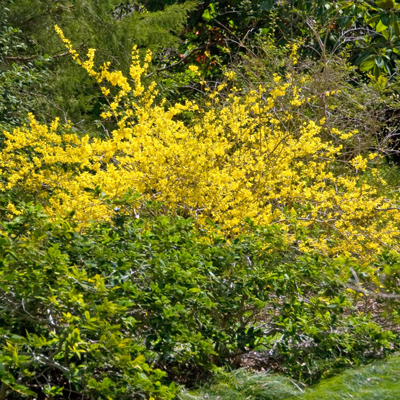
• Forsythias have always been some of my favorite spring bloomers. Their clear yellows blend well with daffodils and they’re easily grown in the northern half of the state. There are several varieties with mature heights ranging from 3 or 4 feet all the way to 6 or 7 feet. They must have full sun for the best bloom.
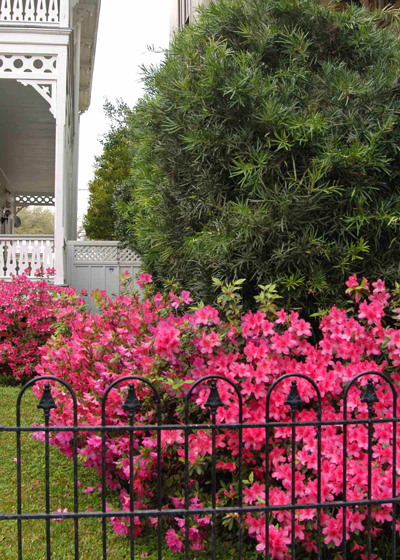
• Azaleas are attractive plants for sites with morning sun and afternoon shade, and newer selections will flower two or three more times during the season. However, unless you’re in the Piney Woods of East Texas, azaleas usually require additional help with their bed preparation. They need acidic planting soils consisting of equal amounts of finely ground pine bark mulch and sphagnum peat moss. Gardenias and fringeflowers (loropetalums) will benefit from the same type of bed prep.
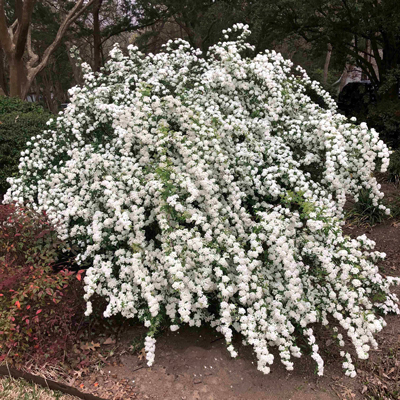
• Bridal wreaths, or spiraeas are graceful, arching shrubs of several varieties. They do well with morning sun and afternoon shade. Their clusters of small white flowers cover the branches. A later-flowering variety called Anthony Waterer bears maroon blooms and stays much shorter.
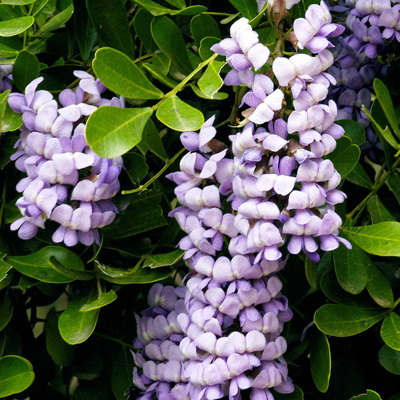
• Texas mountain laurels usually bloom in late March and April. The shrubs grow to 8 to 12 feet tall, and the flowers are borne in grape-like clusters of extremely fragrant lavender blooms. The plants are evergreen. They require perfect drainage, and they are tender to temperatures below 20 degrees.

• Oleanders are handsome evergreen, late-spring-flowering shrubs. Heights vary from 5 to 20 feet tall depending on variety and parts of the state. Note that oleanders are poisonous.
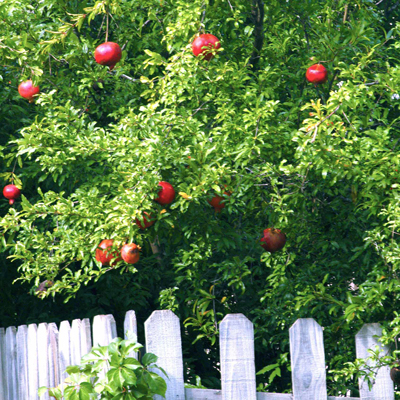
• Pomegranates are handsome with their orange-red, carnation-like blossoms and the deep red fruit that follows. Several new varieties have come into the market offering options beyond the old favorite called ‘Wonderful.’
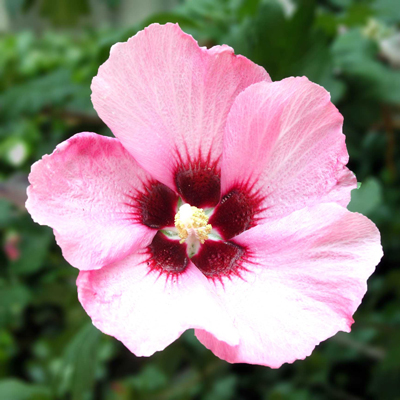
• Althaeas, known more commonly as roses-of-Sharon, are actually sisters of tropical hibiscus. They grow to be 6 to 15 feet tall, depending on variety, and their first blooms arrive in May and into the first hot days of summer.

• Crape myrtles pick it up by late spring. Early varieties sometimes flower in late April, and several more will bloom during May. June is their prime time, however, and if the plants haven’t been topped they will often produce three or four rounds of flowers over the summer.
These final three shrubs actually grow tall enough that you can use them as accenting plants at the corners of your house, 10 to 12 feet out from the eaves. Since they’ll be that far out from the walls, you’re likely to have low evergreens behind them, and that keeps them from looking as stark when they’re bare in the winter. They actually take on the function of small, anchoring accent trees in your garden design.
